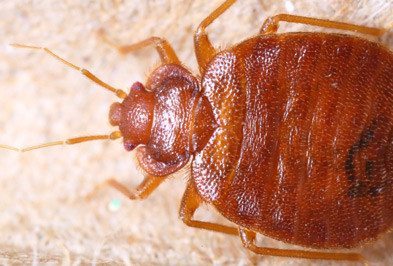Expert Kings Bug Control Cincinnati: Your Trusted Pest control experts
Wiki Article
Kinds Of Insect Control: Which Method Is Right for Your Infestation?
When encountered with a parasite infestation, the option of an ideal technique for parasite control is critical in effectively handling the situation. From chemical treatments to organic services, there exists a variety of techniques that can be used to address various sorts of insects. Each approach comes with its own collection of advantages and factors to consider, making the decision-making process a nuanced one. Comprehending the subtleties of each strategy and reviewing their compatibility with the details bug infestation at hand is crucial for achieving long-lasting success in insect monitoring. By checking out the various kinds of bug control approaches readily available, people can make informed choices customized to their unique situations, making sure a more efficient and lasting end result in parasite removal.Chemical Parasite Control
Chemical insect control involves the use of artificial or normally obtained chemicals to handle and eradicate pest populations properly. This approach is frequently utilized in agriculture, forestry, and household setups to fight a large array of pests, consisting of rodents, pests, and weeds. Using chemical pesticides can give quick and targeted services to pest problems, making it a prominent choice for many people and companies.Among the crucial advantages of chemical parasite control is its capability to promptly get rid of pests, minimizing the risk of damages to crops, residential or commercial property, and human wellness. By utilizing specific chemicals that target specific pests, this technique can effectively manage infestations while lessening injury to helpful organisms and the atmosphere when used correctly.
Nevertheless, the use of chemical insect control additionally raises worries about prospective damaging effects on non-target types, water resources, and human wellness. It is important to adhere to security standards, use chemicals responsibly, and think about different pest control techniques to lessen these threats and guarantee sustainable bug monitoring techniques.
Organic Pest Control
Biological pest control, also recognized as biocontrol, makes use of living microorganisms to reduce and take care of bug populations naturally. By making use of the parasite's all-natural predators or pathogens, organic insect control provides a sustainable and eco pleasant service to pest management.
Mechanical Bug Control
Utilizing physical and hands-on methods to take care of bug populaces, mechanical pest control uses an alternate strategy that does not depend on making use of living microorganisms or synthetic chemicals. This method includes using obstacles, catches, or various other tools to physically discourage or get rid of bugs. By obstructing parasite entry points or establishing traps to catch them, mechanical insect control can successfully minimize problems without presenting chemicals right into the setting.One usual instance of mechanical parasite control is the usage of mesh displays on home windows and doors to protect against pests from getting in structures. This straightforward yet reliable approach works as a physical obstacle, maintaining bugs out while enabling for appropriate ventilation. Furthermore, gadgets like mousetraps, fly swatters, and ultrasonic repellents fall under the mechanical pest control category.
While mechanical insect control techniques can be labor-intensive and require regular surveillance and upkeep, they use a lasting and eco-friendly service for managing pest problems. By incorporating different mechanical techniques, home owners can develop a detailed insect control technique that minimizes dependence on chemical pesticides.
Physical Insect Control

Some common physical insect control techniques consist of making use of barriers such as internet or displays to stop insect entrance, traps to catch and get rid of parasites, and hand-picking to literally get rid of pests from plants or structures. Additionally, techniques like warm treatments can be utilized to manage bugs like bed insects by increasing the temperature level to degrees that are deadly to the bugs.
Physical bug control is especially beneficial in incorporated bug administration (IPM) methods, where numerous bug control techniques are integrated for efficient insect administration while reducing making use of chemicals. By utilizing physical pest control techniques, people can properly resolve parasite invasions with very little environmental impact.
Integrated Parasite Monitoring
When applying physical bug control techniques as part of parasite administration methods, Integrated Insect Management (IPM) becomes a detailed method that leverages various strategies to successfully control pest populaces. IPM concentrates on long-term avoidance of bugs through a mix of biological, cultural, physical, and chemical devices customized to specific parasite problems. By integrating numerous control strategies, IPM intends to lessen the risks connected with insects while also minimizing reliance on chemical remedies.One useful content key facet of IPM is the emphasis on surveillance and evaluating pest populaces to determine one of the most proper control approaches. This proactive method enables early intervention and targeted techniques, leading to extra reliable bug monitoring. In addition, IPM advertises environmentally friendly methods by focusing on non-chemical control approaches and only utilizing chemicals as a last resource.
Conclusion

By utilizing the pest's all-natural killers or virus, biological pest control offers a lasting and ecologically pleasant service to pest monitoring. - Kings cincinnati pest control
Using hands-on and physical methods to manage bug populaces, mechanical parasite control uses an alternate strategy that does not rely on the use of living organisms or synthetic chemicals.An efficient technique to managing parasite populations without counting on chemical or biological methods includes termite barrier the usage of physical insect control techniques.When applying physical insect control techniques as part of insect administration techniques, Integrated Insect Management (IPM) emerges as a comprehensive technique that leverages various methods to properly regulate pest populaces. Chemical pest control involves the use of pesticides, organic parasite control makes use of all-natural killers, mechanical parasite control includes physical obstacles, physical pest control includes trapping or removing bugs, and incorporated pest management combines several methods for a holistic technique to pest control.
Report this wiki page